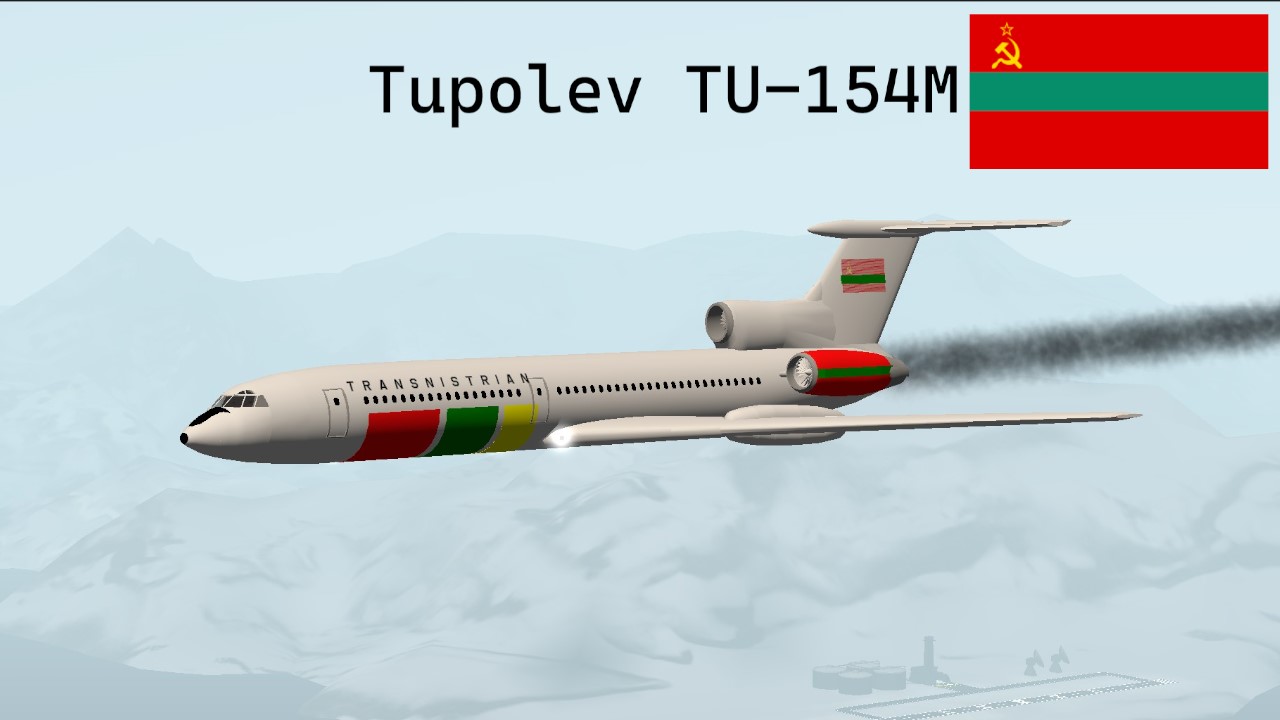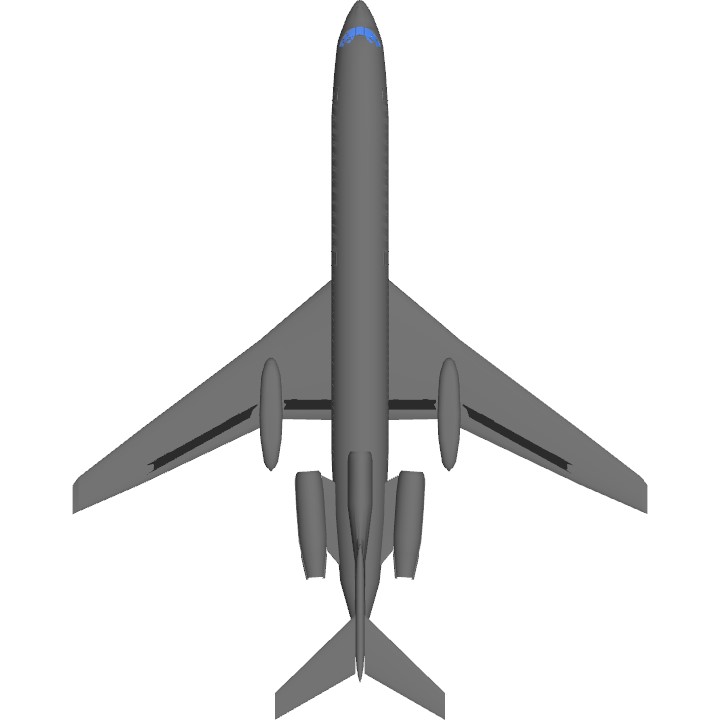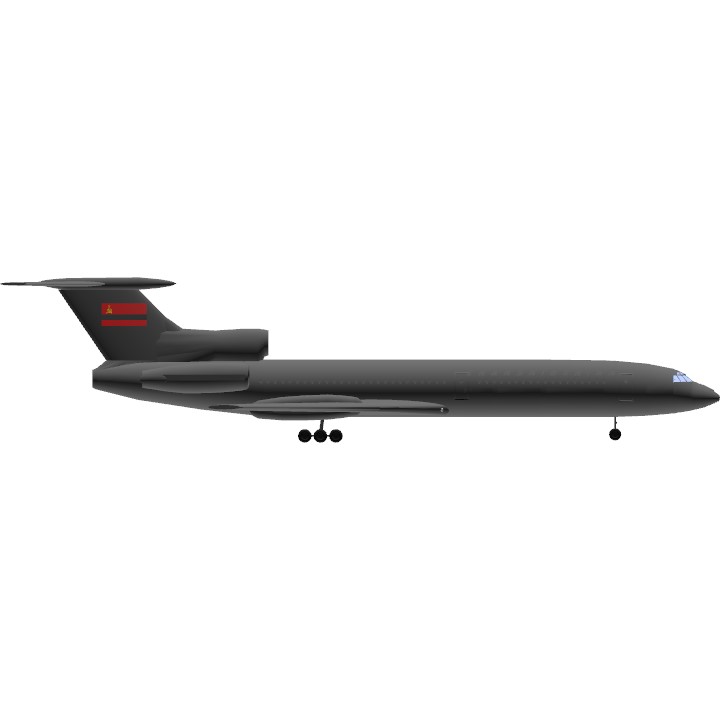Wikipedia
TU-154:
Article 1 out of 2
The Tupolev Tu-154 (Russian: Ty????? ??-154; NATO reporting name: "Careless") is a three-engined, medium-range, narrow-body airliner designed in the mid-1960s and manufactured by Tupolev. A workhorse of Soviet and (subsequently) Russian airlines for several decades, it carried half of all passengers flown by Aeroflot and its subsidiaries (137.5 million/year or 243.8 billion passenger-km in 1990), remaining the standard domestic-route airliner of Russia and former Soviet states until the mid-2000s. It was exported to 17 non-Russian airlines and used as a head-of-state transport by the air forces of several countries.
The aircraft has a cruising speed of 850 km/h (460 kn)[2] and a range of 5,280 kilometres (3,280 mi). Capable of operating from unpaved and gravel airfields with only basic facilities, it was widely used in the extreme Arctic conditions of Russia's northern/eastern regions, where other airliners were unable to operate. Originally designed for a 45,000-hour service life (18,000 cycles), but capable of 80,000 hours with upgrades, it was expected to continue in service until 2016, although noise regulations have restricted flights to Western Europe and other regions.
Transnistria:
Article 2 out of 2
Transnistria, officially the Pridnestrovian Moldavian Republic (PMR),[c] is an unrecognised breakaway state that is internationally recognised as a part of Moldova under military occupation by Russia.[12] Transnistria controls most of the narrow strip of land between the Dniester river and the Moldovan–Ukrainian border, as well as some land on the other side of the river's bank. Its capital and largest city is Tiraspol. Transnistria has been recognised only by three other unrecognised or partially recognised breakaway states: Abkhazia, Artsakh and South Ossetia.[13] Transnistria is officially designated by the Republic of Moldova as the Administrative-Territorial Units of the Left Bank of the Dniester (Romanian: Unita?ile Administrativ-Teritoriale din stînga Nistrului)[14] or as Stînga Nistrului ("Left Bank of the Dniester").[15][16][17]
The region's origins can be traced to the Moldavian Autonomous Soviet Socialist Republic, which was formed in 1924 within the Ukrainian SSR. During World War II, the Soviet Union took parts of the Moldavian ASSR, which was dissolved, and of the Kingdom of Romania's Bessarabia to form the Moldavian Soviet Socialist Republic in 1940. The present history of the region dates to 1990, during the dissolution of the Soviet Union, when the Pridnestrovian Moldavian Soviet Socialist Republic was established in hopes that it would remain within the Soviet Union should Moldova seek unification with Romania or independence, the latter occurring in August 1991. Shortly afterwards, a military conflict between the two parties started in March 1992 and concluded with a ceasefire in July that year.
As part of the ceasefire agreement, a three-party (Russia, Moldova, Transnistria) Joint Control Commission supervises the security arrangements in the demilitarised zone, comprising 20 localities on both sides of the river.[citation needed] Although the ceasefire has held, the territory's political status remains unresolved: Transnistria is an unrecognised but de facto independent presidential republic[18] with its own government, parliament, military, police, postal system, currency, and vehicle registration.[19][20][21][22] Its authorities have adopted a constitution, flag, national anthem, and coat of arms. After a 2005 agreement between Moldova and Ukraine, all Transnistrian companies that seek to export goods through the Ukrainian border must be registered with the Moldovan authorities.[23] This agreement was implemented after the European Union Border Assistance Mission to Moldova and Ukraine (EUBAM) took force in 2005.[24] Most Transnistrians have Moldovan citizenship,[25] but many also have Russian, Romanian, or Ukrainian citizenship.[26][27] The main ethnic groups are Russians, Moldovans/Romanians, and Ukrainians.
Transnistria, along with Abkhazia, South Ossetia, and Artsakh, is a post-Soviet "frozen conflict" zone.[28][29] These four partially recognised or unrecognised states maintain friendly relations with each other and form the Community for Democracy and Rights of Nations.
Credits:
XAircraftManufacturer
Notes:
*Smoke trails not included!
Specifications
Spotlights
- LonelyAustrianUhlan 2.1 years ago
General Characteristics
- Successors 2 airplane(s) +28 bonus
- Created On Windows
- Wingspan 131.7ft (40.1m)
- Length 164.8ft (50.2m)
- Height 37.9ft (11.5m)
- Empty Weight N/A
- Loaded Weight 91,357lbs (41,439kg)
Performance
- Power/Weight Ratio 1.937
- Wing Loading 33.4lbs/ft2 (163.1kg/m2)
- Wing Area 2,734.7ft2 (254.1m2)
- Drag Points 18398
Parts
- Number of Parts 367
- Control Surfaces 5
- Performance Cost 1,918





@Pan no you
@KenzarAircraft youre getting oiled up
TRANSNISTRIA MENTIONED RAHHHHH
@EpicBullDog no?
not bad, do you remember me on that japan airlines dc10?
@ColonelCanada Transnistria is only recognised by other non-recognised countries so kinda
@SheriffHackdogMCPE No. This is fictional
Transnistria is a real country, I thought?
does transnistria have an airline rn